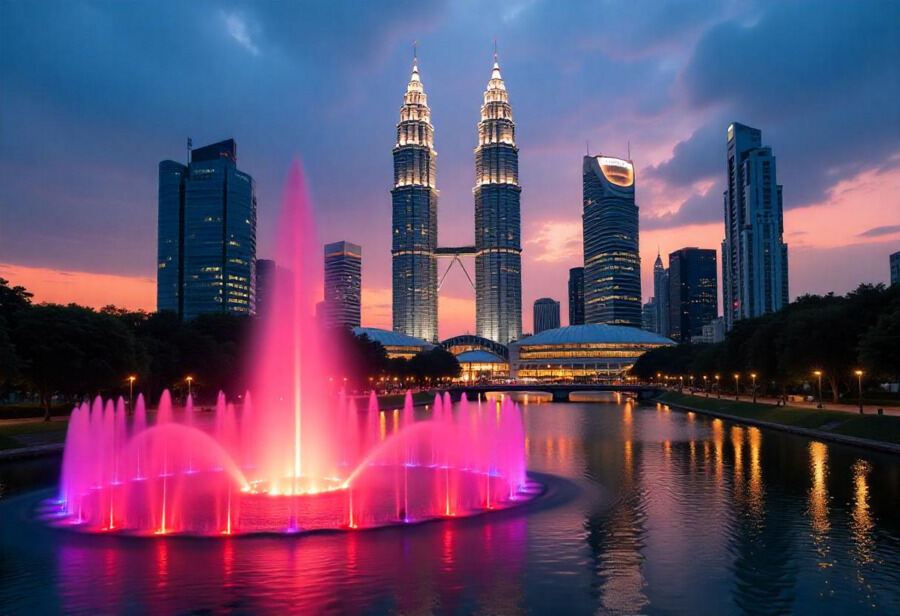≡-Malaysia Set To Quadruple Its Medical Tourism Revenue By 2028 As International Demand For Low-Cost Quality Care Surges – Viral of Today
<> Viral of Today <>
Home » TOURISM NEWS » Malaysia Set To Quadruple Its Medical Tourism Revenue By 2028 As International Demand For Low-Cost Quality Care Surges Monday, June 23, 2025Malaysia is set to quadruple its medical tourism revenue by 2028 as international demand for affordable, high-quality healthcare continues to rise, positioning the country as a top choice for patients seeking value without compromising on medical standards. With costs significantly lower than in developed countries, access to English-speaking professionals, and a network of internationally accredited hospitals, Malaysia offers a compelling blend of efficiency, expertise, and comfort. Government initiatives, strategic marketing, and seamless travel access further reinforce its appeal, especially among patients from Asia and the Middle East seeking specialized treatments in a trusted and culturally familiar environment.Malaysia’s medical tourism sector is expected to expand significantly, rising from one point two billion US dollars in 2020 to five point one billion US dollars by 2028, supported by a steady compound annual growth rate of four point five percent over the 2021 to 2028 period. The country continues to attract a growing number of international patients, thanks to its competitive healthcare pricing, advanced medical facilities, English-speaking medical staff, and appealing travel environment. These strengths are rapidly establishing Malaysia as a key destination for medical travelers across Asia and the Middle EastMalaysia Attracts Medical Tourists with Cost and QualityMalaysia consistently draws international patients who seek reliable, affordable, and high-standard medical treatment. Cities like Kuala Lumpur, Penang, and Johor Bahru have developed strong reputations for offering a wide array of healthcare services—from cosmetic surgery and dental procedures to fertility treatments and advanced cardiology—at a fraction of the cost charged in developed countries.Malaysia’s healthcare system benefits from a growing number of internationally accredited hospitals. These facilities offer advanced technology, trained specialists, and multilingual support teams, allowing patients from various countries to feel confident and comfortable throughout their treatment journey. Many hospitals also cater to international protocols, including patient confidentiality, safety procedures, and quality assurance frameworks.Key Drivers Fueling Market GrowthAffordable Pricing Draws Global AttentionMalaysia offers medical procedures that cost 30% to 70% less than equivalent treatments in countries like the United States, Singapore, and Australia. This price advantage remains one of the strongest reasons patients from Indonesia, Bangladesh, China, and the Middle East continue to choose Malaysia over other regional alternatives.Whether for orthopedic surgery, cardiac procedures, or dental implants, patients can access high-quality care without the high cost. For many, the financial savings make long-distance travel worthwhile, especially when treatment is combined with a vacation experience.Government Support Strengthens Industry VisibilityMalaysia has invested significantly in promoting its medical tourism industry on the global stage. The Malaysia Healthcare Travel Council (MHTC), a government-backed agency, actively promotes healthcare packages and supports private sector growth through marketing, subsidies, and branding campaigns.Initiatives such as the Malaysia Year of Healthcare Travel 2020–2025 focus on building international awareness and boosting patient inflows from target markets. The government also offers tax exemptions and fast-tracked medical visas to streamline the experience for foreign patients.Healthcare Infrastructure Meets Global StandardsMany Malaysian hospitals meet or exceed international standards, with Joint Commission International (JCI) accreditations and certifications from global healthcare bodies. Facilities in Kuala Lumpur and Penang, in particular, offer a wide range of specialized services delivered by experienced professionals trained in the UK, US, Australia, and Europe.The consistent investment in healthcare infrastructure, diagnostic technology, and surgical capabilities continues to elevate Malaysia’s standing among global medical tourism destinations.Malaysia’s Geography and Culture Add to Its AppealLocated at the heart of Southeast Asia, Malaysia offers convenient access to patients from Indonesia, Singapore, Thailand, and China. The country’s English-speaking environment, multicultural hospitality, and established travel infrastructure provide a welcoming setting for international patients.Patients often combine their medical visits with tourism, taking advantage of Malaysia’s beaches, shopping, and cultural sites. This blend of medical care and tourism remains a key factor behind Malaysia’s increasing popularity.Barriers Malaysia Must AddressCompetition from Regional Rivals Remains StrongMalaysia faces stiff competition from Thailand, Singapore, and India. Thailand’s massive medical tourism ecosystem and low costs appeal to budget-conscious travelers, while Singapore’s premium reputation attracts patients seeking high-end treatment. India offers similar affordability and a broad range of specialties, creating pressure for Malaysia to further differentiate itself.Economic Pressures and Travel Restrictions Slow RecoveryUncertainty in the aftermath of the pandemic continues to disrupt the arrival of international patients. Economic challenges in major source countries, combined with unstable currency exchange rates, are causing delays in medical travel planning. At the same time, ongoing travel barriers and visa limitations in certain regions are holding back a full recovery in the near term.Infrastructure Strains During Peak SeasonsHospitals in major cities sometimes struggle with capacity constraints during peak travel periods. High patient volumes can lead to longer wait times, strained staff, and reduced service quality. Malaysia must expand its medical infrastructure and improve patient scheduling systems to handle surging demand efficiently.Quality Control Across All FacilitiesWhile top hospitals meet international standards, smaller or non-accredited clinics may fall short. Ensuring consistent quality and regulating non-hospital medical providers is essential to maintaining trust in the system. Patients expect uniform care regardless of the facility they choose.Regional Insights on Patient FlowMalaysia’s medical tourism sector centers around three key cities:Penang serves as a preferred destination for patients from Indonesia, offering easy access and specialist services in orthopedics, cardiology, and gynecology.Kuala Lumpur attracts a diverse mix of patients from China, the Middle East, and Australia, drawn by its modern hospitals and broad treatment options.Johor Bahru benefits from its close proximity to Singapore, serving cross-border patients who seek more affordable care without compromising on quality.The Asia-Pacific region and the Middle East contribute the highest number of inbound patients, with increasing interest from regions like Australia and South Asia.Future Opportunities and Emerging TrendsDigital Healthcare ExpansionMalaysia is integrating telemedicine into its healthcare ecosystem, allowing international patients to access consultations, follow-up care, and second opinions without returning for in-person visits. This flexibility appeals to tech-savvy travelers and helps ensure continuity of care.Specialized Services in High DemandBy expanding into niche areas like fertility treatments, oncology, and lifestyle medicine, Malaysia can attract patients from new markets. These specialties offer higher revenue potential and cater to patient segments that seek advanced care not easily available in their home countries.Post-COVID Branding Focused on SafetyMalaysia is marketing its healthcare system as safe, sanitized, and compliant with global protocols. Messaging around vaccination rates, hospital cleanliness, and patient protection aims to rebuild confidence and reestablish medical travel volume.Insurance Partnerships Can Unlock GrowthCollaborating with international insurance providers can help Malaysia reach new patients from developed countries where insurers are increasingly open to covering overseas treatments. Insurance-backed care removes financial hesitation and makes Malaysia more competitive in premium marketsMalaysia is set to quadruple its medical tourism revenue by 2028 as more international patients seek affordable, high-quality care supported by advanced hospitals, government promotion, and rising demand across Asia and the Middle East.Malaysia’s medical tourism sector stands at the intersection of affordability, quality, and global accessibility. With a strong foundation, targeted government support, and evolving healthcare offerings, the country is well-positioned to capture a larger share of the international medical travel market by 2028. While challenges remain, Malaysia’s proactive strategies and patient-first approach continue to drive momentum and reinforce its status as one of the most attractive medical tourism destinations in the world.
This information will surprise you!
See also
- Read until the end to discover everything.
- Important information you need to know.
- Interesting facts and helpful tips.
Conclusion
Did you enjoy the news? Keep following us daily!













